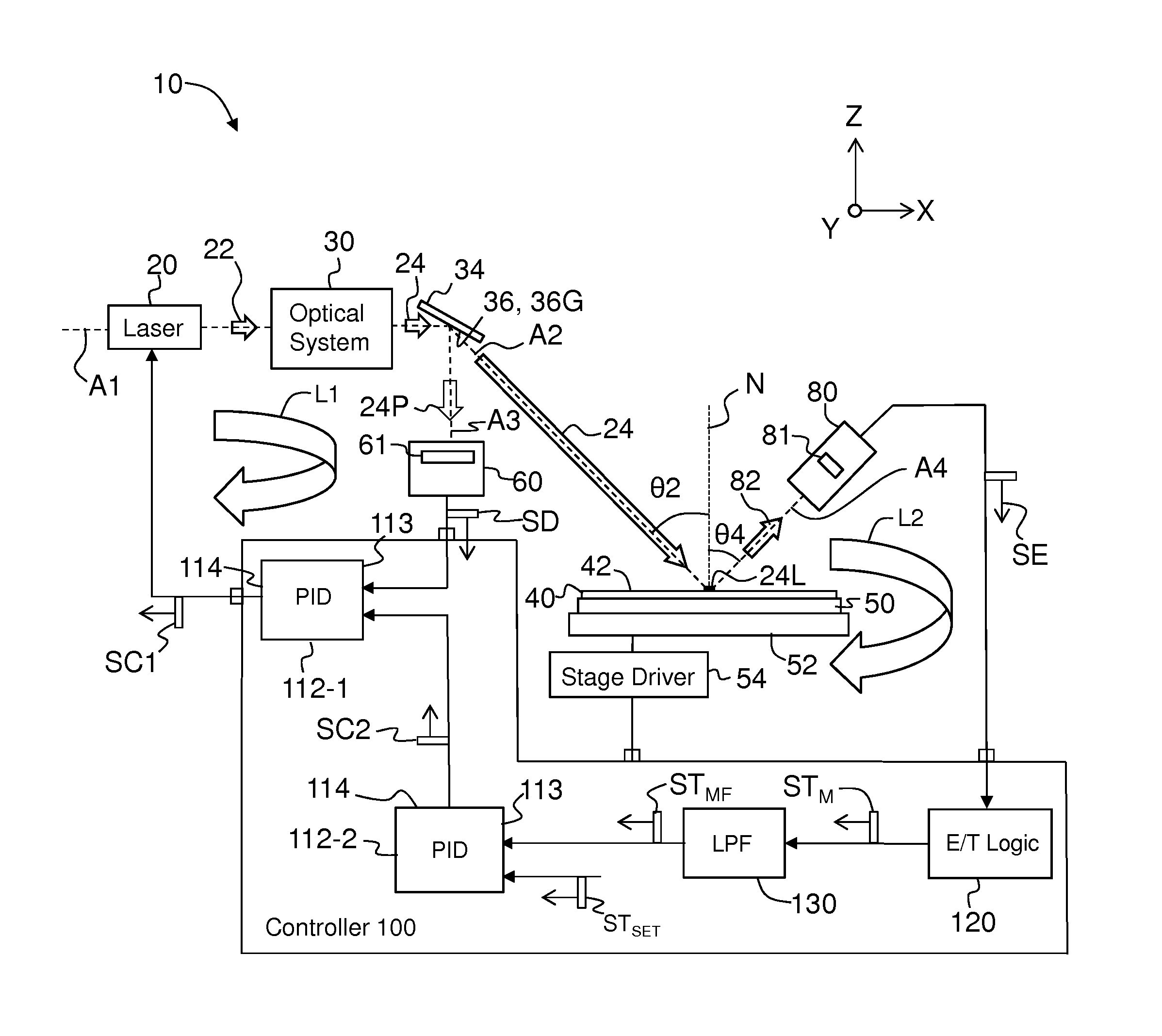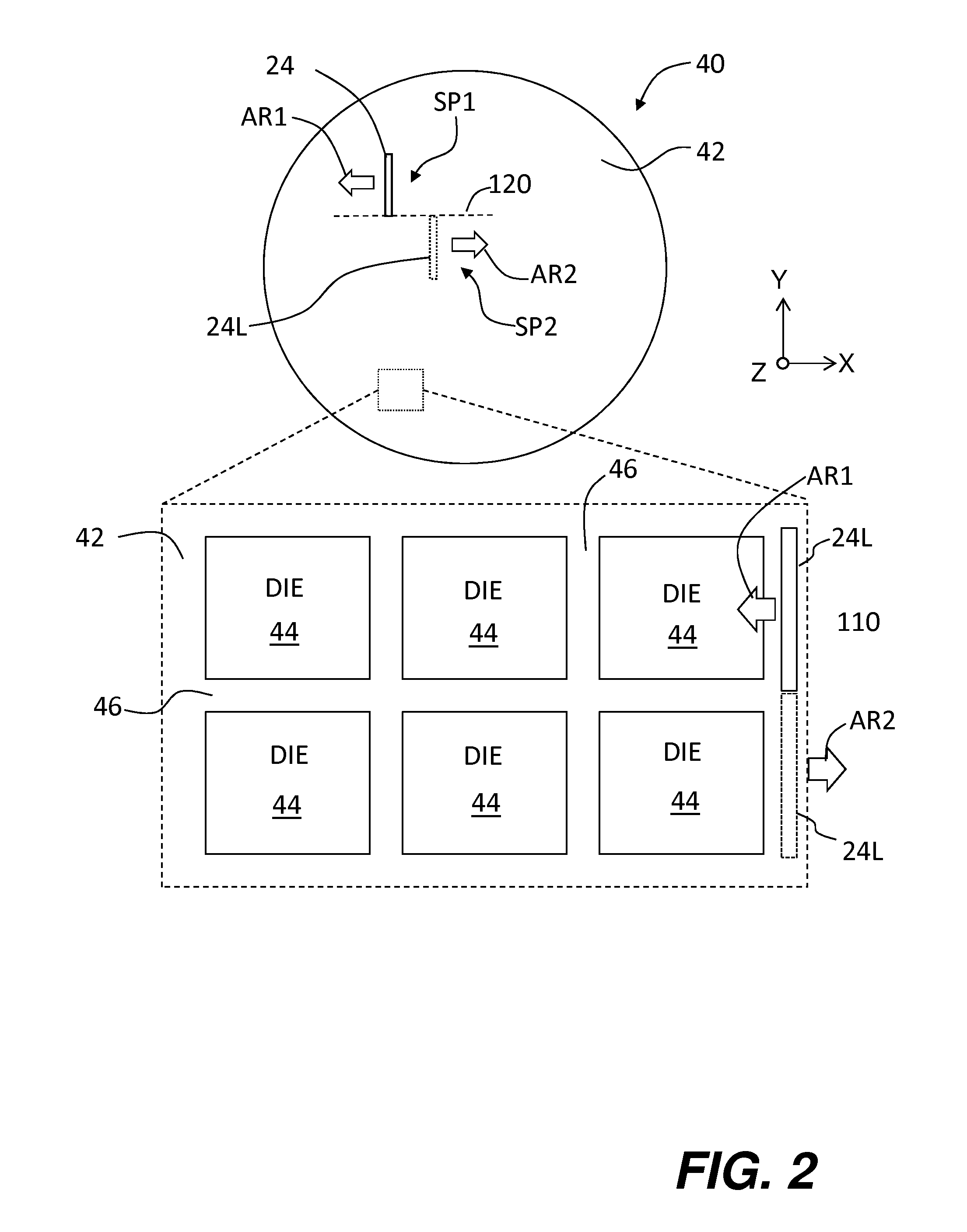Dual-loop control for laser annealing of semiconductor wafers
a laser annealing and dual-loop technology, applied in the direction of transportation and packaging, manufacturing tools, packaging goods types, etc., can solve the problems of limiting the temperature uniformity performance of laser annealing, temperature measurement error, and unstable temperature control system, so as to reduce the noise of 1/f and reduce the variation of annealing temperature
- Summary
- Abstract
- Description
- Claims
- Application Information
AI Technical Summary
Benefits of technology
Problems solved by technology
Method used
Image
Examples
Embodiment Construction
[0019]Reference is now made in detail to embodiments of the disclosure, examples of which are illustrated in the accompanying drawings. Whenever possible, the same or like reference numbers and symbols are used throughout the drawings to refer to the same or like parts.
[0020]FIG. 1 is a schematic diagram of an example laser annealing system 10 that illustrates an embodiment of the dual-loop control configuration for the system. A Cartesian coordinate system is shown for the sake of reference. Example laser annealing systems 10 are described, for example, U.S. Pat. Nos. 7,612,372, 7,154,066 and 6,747,245, and U.S. Patent Application Publications No. 2010 / 0084744 and 2012 / 0100640, all of which are incorporated by reference herein.
[0021]System 10 includes laser 20 that emits an initial laser beam 22 along an optical axis A1 that runs in the X-direction. An example laser 20 is a CO2 laser that emits light at a nominal annealing wavelength λA of 10.6 μm. Laser 20 may also consist of or i...
PUM
| Property | Measurement | Unit |
|---|---|---|
| frequency f1 | aaaaa | aaaaa |
| frequency f2 | aaaaa | aaaaa |
| temperature | aaaaa | aaaaa |
Abstract
Description
Claims
Application Information
 Login to View More
Login to View More - R&D
- Intellectual Property
- Life Sciences
- Materials
- Tech Scout
- Unparalleled Data Quality
- Higher Quality Content
- 60% Fewer Hallucinations
Browse by: Latest US Patents, China's latest patents, Technical Efficacy Thesaurus, Application Domain, Technology Topic, Popular Technical Reports.
© 2025 PatSnap. All rights reserved.Legal|Privacy policy|Modern Slavery Act Transparency Statement|Sitemap|About US| Contact US: help@patsnap.com



